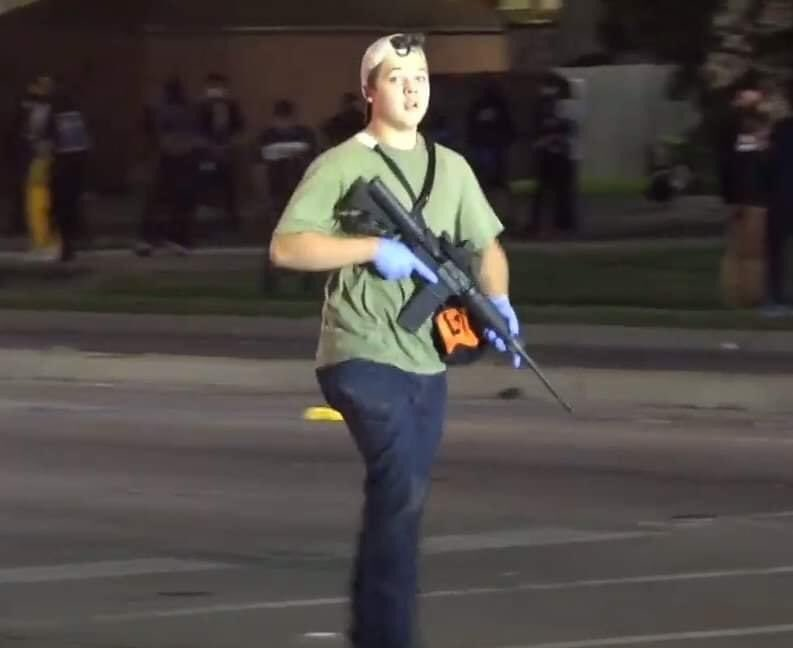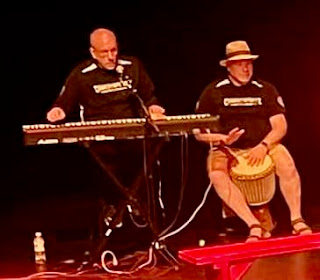Dispatches from Ghana II: Clappers

We are all body musicians.
It starts in infancy. As soon as a baby learns to make noises with hands or feet, that child is a body musician. As we mature, we explore more sounds, and not always with music in mind: making noises that evoke giggles is a staple of elementary school humor. Making them rhythmically, on the other hand, is something we have to figure out, or learn from another. I was in my 40s before I realized there could be music in body noises other than stomps, snaps, and claps.
Then Orff Schulwerk entered my life, and changed everything.
I can't remember how it was used at my first workshop in 2005, but I know it was there. Body percussion is as essential to Orff pedagogy as rote imitation, improvisation, and mallet instruments with removable bars. An Orff staple is to teach a rhythm first by speech, then by playing it on the body, programming it indelibly into the brain, before ever an instrument is touched.
I remember well how body music entered into my second workshop that fall, as Doug Goodkin introduced Keith Terry's approach to rhythm units, using five basic body sounds and a handful of odd-numbered patterns to create complex group polyrhythms. About a year later, I was able to attend a workshop with Keith Terry, the man himself, at a dance studio in downtown Portland, and for the first time had my brain broken by him. A few years later, taking my Level II and III trainings in San Francisco, I saw more of Keith's work, both as a performer and a clinician. Two summers ago, I took a week-long workshop with him, and invited him to Portland to teach a day-long workshop there.
On his Facebook profile, where it lists his profession, Keith calls himself a clapper. His kids like to say he claps for a living. He does much more than that, of course--he's an accomplished jazz drummer, bass player, and, when he's performing body music, a dancer as well. But clapping is at the heart of what he does, and what all body musicians do.
As a young musician, Keith begin exploring the possibilities of transferring drum kit rhythms to his body. This interest became a passion, and with it the quest to discover how cultures around the world have put their own identity on this most ancient form of music. Whatever he learned, he added to his repertoire. As he entered middle age, he began to seek ways to bring body musicians of different cultures together to learn from each other and create new fusions of sounds and rhythms in a collaborative setting. Thus was born the International Body Music Festival.
For the last week and a half, I've been in Ghana for the 10th (and last) festival. I've experienced workshops and performances by musicians from Quebec, France, Spain, Cuba, China, Colombia, Brazil, South Africa, Turkey, Switzerland, Britain, and the United States. I've been part of music circles that wove rich, intricate harmonies and polyrhythms out of thin air. With my fellow festival attendees, I've jammed with Ghanaian drummers and dancers to create new fusions of our mutual music. It's been a powerful, beautiful, inspiring experience, and I don't want it to end.
I learned at this festival that, for all the prominence of African-American body techniques like hambone, juba, and steppin', Keith has had a hard time generating interest for this music in the United States. Europe, on the other hand, has a vibrant body music community, and as I've discovered with Orff trainings, Brazil is teeming with internationally-minded musicians longing to share their rhythms and songs with others.
There were no ordinary performances at this festival. Many of the musicians incorporated clowning into their performances. Others took more serious directions, particularly in gumboot, a dance/percussion form from South Africa that was an important form of resistance to the oppression of Apartheid, and continues to be a forceful voice for justice. Whatever the goal of the musician--to inspire, to amuse, to move--every performance evoked awe with the complexity, virtuosity, and panache of the person or people making the music.
As central as the performances were, I think the most important aspect of the festival was the sense of mutual support by the community. I've been to festivals--particularly (not the case here) if there was a competition involved--where performers were only around for their own sets. That's not the case at IBMF: most of the attendees were performers, and they turned out for each other, shouting their approval at every sound, step, or expression. I performed just once, at the "open mic" (there was actually no sound system), telling a story I use in my classroom to introduce six-year-olds to sol, the fifth scale degree. That was the third night of the festival, and outside of my classroom, I've never had a more attentive audience--or one that kept on reminding me, right up until we said our goodbyes, how much they loved the story.
The most community-building side of the festival was the jam circle. The more organized version of this experience is to have a facilitator line out some improvised wordless vocal patterns, then let the music build, grow, and evolve as different participants make their own contributions. Some of these were achingly beautiful. Some lasted far longer than I ever imagined possible. I found myself deeply, spiritually moved, something I'll write about in far more detail in an upcoming post.
More often, though, jams would develop spontaneously as one musician or another heard an interesting sound or rhythm in the environment, began playing with it, and soon found others joining in. This could happen in line for dinner, on the bus traveling to or from a remote experience, even in the washroom, experimenting with an interesting acoustic environment. Jamming like this is the sort of thing that drives the parents of a drummer crazy, but it is a fundamental form of musical expression. Going forward, I expect to encourage it in my students, who've already shown a propensity for playing with the body noises I've taught them.
And why would I want to do that? Because of all the many lessons I'm bringing back from IBMF, the most powerful is this: music speaks far louder than words. Making music together bonds people in ways that no other experience can. In our divided time, as my nation is torn asunder by paranoia and bigotry, I've got no higher calling than to use my talents to foster peace and understanding.
I've met people who think music teaching is inconsequential, that all I do, all day long, is teach children clapping games. They're wrong, of course: I'm doing my part to save the world, one clap at a time.


Comments
Post a Comment